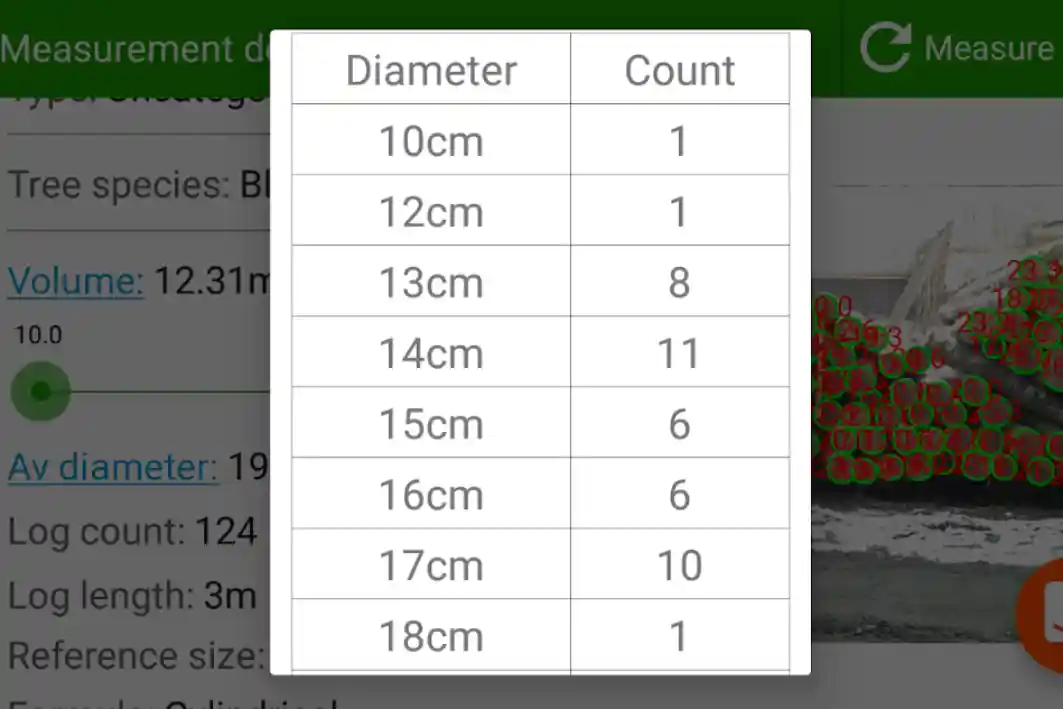We have already introduced our measuring formulas and presented our unique solution to prospects and clients on our blog. Whenever needed, you can check our “How to measure Roundwood?’’ blog post to clarify any doubts regarding different formulas used all over the world and certain requirements for different companies too.

Today, our subject is also related to measurements in a matter of its results. When getting the results from the Diameter measurement with Timbeter, some clients asked about the differences between the number shown in the measurements and the final results. Well, now it’s time to understand how the rounding in different formulas can influence the results.
Mathematically talking, the rounding is the process of replacing a number by another number of approximately same value but fewer digits. In rounding, the final digits from 0 to 4 are dropped to the closest smaller integer while digits from 5 to 9 are increased to the closest bigger integer digit.
What occurs to mathematical formulas regarding timber measurement is that we don’t always round to the nearest integer. In some countries, for instance, the use of JAS (Japanese Agricultural Standard) is largely spread. The rounding of JAS works differently from the rest of the formulas since the result will be rounded down to the nearest even number (interesting example, a log with 25.9cm of diameter will be rounded down to 24). Of course, the difference between results can be a cause of distrust and that’s why you need to understand your region and industry requirements before using a certain formula.

Inside Timbeter, you can check different formulas and their roundings according to the examples below:
JAS (Japanese Agricultural Standard)
JAS rounds each log volume to 3 decimal places. There are two rounding options according to the final diameter result:
Logs with less than 14 cm of diameter – the result will be rounded down.
Logs with more than 14 cm of diameter – the result will be rounded down to the nearest even integer.
Doyle Log
The result is rounded to the nearest board foot.
International ¼’’ Rule In this case, a standardized taper measuring 0,125’’ is used to calculate the segments of a single log. Each of this segments is resulting of 4’ cylinders and it’s rounded to the nearest 5 board feet. One example is that the result of 157.3 board feet will be rounded to 155 board feet.
Ontario Scaler’s Rule
Volume is rounded to 3 decimal places.
Scribner Decimal C Rule
In this formula popular in the West of the United States, the result in board foot will be rounded to the nearest 10 board feet. As an example, 313 bf will be rounded to 310 bf. A result of 317 bf will be rounded to 320 bf.
Cylindrical
In this case, the result will be rounded according to the first decimal house.
Do you have any questions about our formulas and methods to measure timber? Get in touch with us and make the best use of Timbeter in your everyday work!
